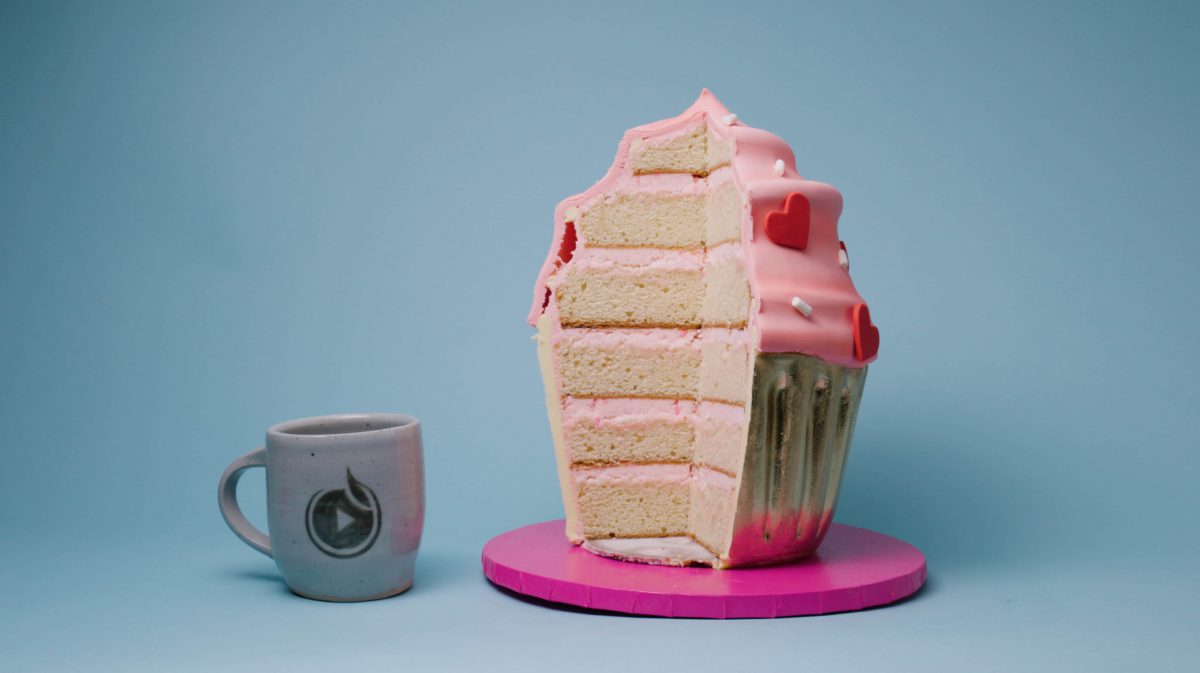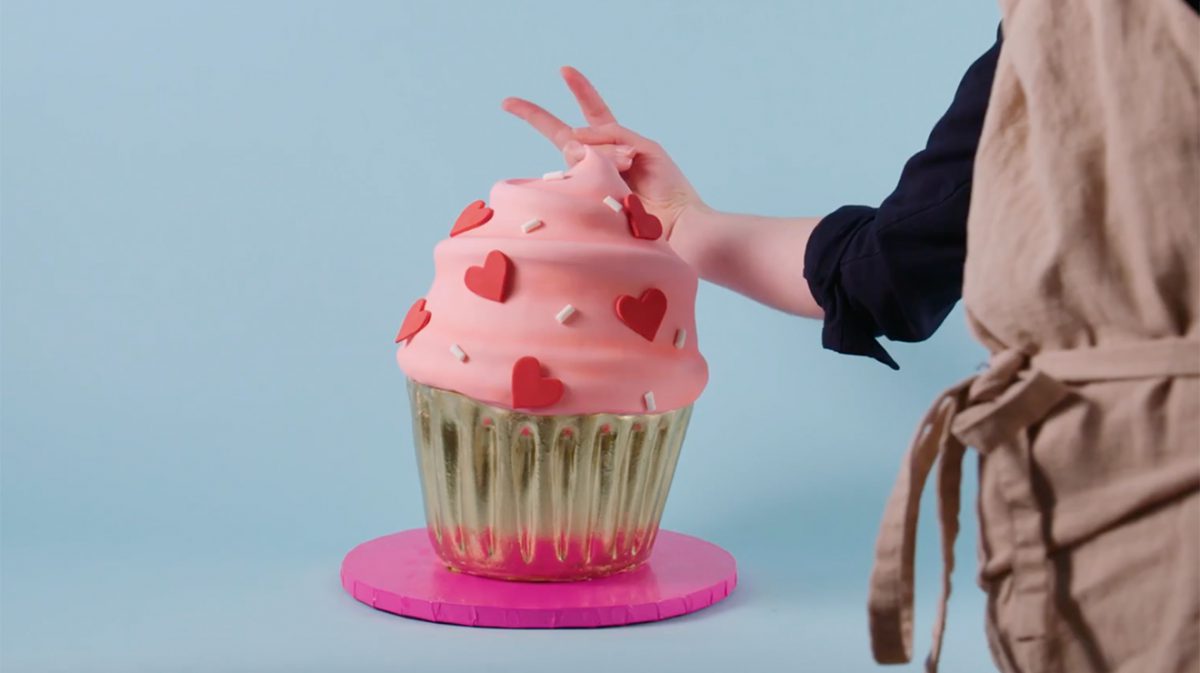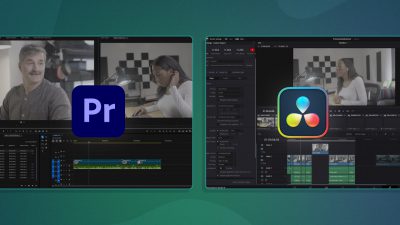Whether you love it or hate it, Valentine’s Day is upon us once again. And with it, comes another opportunity to flex our creative muscles on a sweet promotional video.
In this post, we’ll go over our process and share behind-the-scenes photos and video from our brand new cupcake shoot.
Presenting: The Most Amazing Cupcake
Last year for Valentine’s Day, we created a fun film featuring cupcakes. Instead of finding a new theme, we thought it would be more fun to turn last year’s theme up to eleven. This year, we brought in an expert to take our Valentine’s Day cupcake film to a whole new level.
We partnered with Julie Horowitz, owner of Shweetums, a custom cake project here in New York City. She’s definitely a cake guru, making creations you’d never believe were made of sugar.
Shweetums is a project by Julie Horowitz, owner of Ducks Eatery and former Harry & Ida’s in NYC. Julie is primarily self-taught and has always found a sense of calm and fulfillment in working with her hands. After a traumatic childhood incident involving a spastic elbow and an upside down chocolate birthday cake, Julie has gravitated towards cake as a medium to achieve a long sought after self-reprieve.
After discussing with Julie, we decided to run with the idea that bigger is better. Who wouldn’t want a giant cupcake, right? See the photo below for scale.

The Process
With the idea in place, we got to work. For this project, we wanted to do a mix of stop motion animation and slow-motion vignettes. If you’re unfamiliar with stop motion animation, here is a quick overview.
“Stop motion animation is a specific type of animated video where the action taking place is filmed one frame at a time. Typically, it’s done with inanimate objects to bring them to life in unexpected ways.”
For a full overview of stop motion, check out our blog post, “Stop Motion Animation Secrets.”
The main reason we wanted to use stop motion is because it is an excellent tool to document the creation of something over time. We figured capturing Julie crafting a giant cupcake each step of the way would look remarkable on screen. We were long-time fans of her work and, honestly, we were just curious to see how it’s done!
Studio Setup
For our studio setup, we kept it simple. We did a one-camera shoot utilizing our Sony FS7 with a Fujinon 18-55 cine zoom lens. To light the cupcake, we used two lights diffused to keep them soft, and far enough apart to give the cake a good shape. We kept our composition wide to give us the flexibility to make the video in both 16:9 and 1:1 aspect ratios, in order to accommodate social media and vertical formats. The last step was to secure the camera in one spot. One of the most important parts of stop motion animation is consistency, so we used sandbags to secure the camera in place so it wouldn’t move.
Filming
For the stop-motion filming, all we had to do was to start and stop the camera, and the rest was done in post-production. You can also do stop motion with a still photo camera (and that’s usually our preference) but by using a video camera, we were able to roll on some of the process, too. This gave us a lot of useable footage of the process and of outtakes. We also kept our close-up shots pretty straightforward. By focusing on the parts of the process that involved motion (icing the cake, smoothing out the fondant, or adding the last accent heart) those shots help keep the audience engaged (and hopefully make them hungry).
We love projects like this because we can create a variety of assets from one single shoot. Apart from the main video, we also produce a ton of images, video clips, and behind-the-scenes footage. Every video you make can provide your team with multiple assets that can be used over time. For more on this, check out our post “How to Make Multiple Marketing Assets From a Single Video.”
An added bonus to incorporating food into your marketing videos is getting to eat your project afterwards. Check out the extended cut of our video and let us know what you think about our process in the comments below.








